Breeding, Companion, Show & Working Dogs.
Welcome to my Photo Album.
Click each link to view larger photo.
What are the different types of competition?
Some shows conduct ‘sweepstakes’ competitions for two age groups – Babies (three to six months) and Puppies (six to 12 months). All dogs and bitches of every breed are eligible to enter and compete against each other at the same time. Sweepstakes are usually the first competition of the day.
Dogs Australia classifies dog breeds into seven groups: – Toy, Terriers, Gundogs, Hounds, Working dogs, Utility and Non-Sporting. Each group is judged independently of the other groups.
Judging usually begins in all rings at the same time with the various breeds, followed by group judging, and then General Specials. In All Breed shows, dogs are judged alphabetically by breed according to Group classification.
Challenge points
For each breed, dogs are judged before bitches. They are judged in age classes. Usually, there is a maximum of seven different age classes for each breed and placings of first, second or third, are awarded for each age class. Except at large specialty shows where the number of entries may allow a fourth and fifth placing.
All the first placed winners of each age class compete for the Challenge Award (excluding Baby Puppy). The dog selected as Challenge will then leave the ring and the dog that came second in the same age class as the Challenge winner returns to the ring to compete for Reserve Challenge. So if there are two or more dogs, two dogs will be chosen for Challenge and Reserve Challenge respectively. Then the bitches are judged accordingly.
Best in Breed
Then, the Challenge Dog re-enters the ring to compete with the Challenge Bitch for Best of Breed.
Whoever wins the Best of Breed leaves the ring and is replaced by the Reserve Challenge of the same sex. Now, the remaining Challenge winner competes with the Reserve Challenge winner of the opposite sex for the Challenge Best of Breed, or Runner Up Best of Breed. Best of Breed and Challenge Best of Breed, or runner Up Best of Breed, are relegated to first place in their respective age categories.
Best in Class
The winners of each class then compete with the opposite sex winner of the same class in the same way for Class in Breed. The winners for each class progress to compete for Class in Group.
Best in Group
When all the breeds in the group have been judged, then all the Best of Breeds enter in alphabetical order to compete for the Best in Group. Whoever wins the Best in Group leaves the ring and is replaced by the Runner Up Best Of Breed. The Runner-up Best of Breed then comes in to compete against all other Best of Breed winners for the Runner-up Best in Group.
Best in Group and Runner-up Best in Group winners are automatically the Best exhibit in whatever classes they were entered into which means those age classes are eliminated from further judging. All other classes are then judged by having all winners for each particular age group compete for Class in Group.
General Specials (Best in Show)
When all groups have been judged, the seven Best in Group winners enter the General Specials ring for Best in Show and the judging sequence of Best in Group is repeated.
The Runner-up Best in Group to the Best in Group-winning dog or bitch that wins Best in Show comes in for Runner-up Best in Show. These two dog/bitches are automatically Best in Class in Show, and all other Class in Shows are judged in the same manner as the Class in Groups.
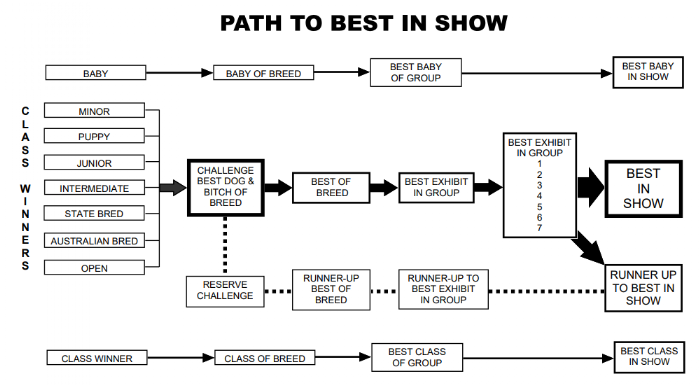
Don’t Exceed the Speed Limit
Did you watch Westminster? Did you love eavesdropping on the judges as they talked to the exhibitors? Did you notice a recurring theme? Most of them, including Best In Show Judge Pat Trotter, asked the handlers to gait their dogs at a reasonable speed. Did you catch that? And do you know why nearly all the judges referenced speed at some point in their conversations?
From Pat Trotter on down, the judges’ instructions included gaiting speed because many, if not most, handlers move their dogs too fast. That makes nearly every dog look worse in motion than it really is. When the dog is moved too fast, the judge either has to ask the handler to regait the dog more slowly or try to imagine what the dog might move like if it was moved at the correct speed. Since judges are on a tight schedule, they can’t afford the time it takes to regait nearly every dog, so there’s a whole lot of imagining going on in the ring.
In horsemanship and dressage, the outline and carriage of the horse is called the frame, and the goal is to keep the horse in its frame as the rider moves through the paces in the class. This creates a picture of sound, elegant power in the horse and quiet control in the rider. In the conformation ring at a dog show, isn’t that a picture you’d like to create? For most dogs, moving too fast breaks them out of their frame and they can look like a hot mess going down, back and around.
Why do handlers move so fast? Maybe it’s ring nerves, or maybe it’s trying to keep up with the dog ahead of them. Maybe they’ve seen famous handlers move fast and think they need to move fast, too. Whatever the reason, most handlers move their dogs faster than is appropriate for that dog, resulting in a picture that doesn’t represent how the dog is made. When the dog moves too fast, foot-timing can falter, crabbing can creep in and poor toplines can pop out on what is truly a better dog than the judge is seeing. Otherwise reasonable fronts can look like eggbeaters and rears can overreach or fly up too high behind.
How fast is too fast? It depends on the breed and the individual dog. There is simply no substitute for video as you train with your dog; set up your phone, push “record” and gait your dog at the speed you think is right. Treat your dog, let it sniff around while you watch the video to see how it looked, and try again at a different speed to see what happens–shooting video with every practice run. Start with the down and back, finding the speed where the dog looks its absolute best, and then practice that speed a few times to help you remember the feel of it. This is called muscle memory, and you need it just as much as your dog does. Since you’re in charge of gaiting speed in a welltrained dog, you need to practice the down and back speed with and without your dog until you know it in your muscles without having to think about it.
Once you have the down and back speed figured out, work on the go-around speed. Again, you can set up your phone or you can have someone hold it and shoot the video for you. If you have the space, the best way to find the right go-around speed is to have a friend hold your phone as you run in a ring-sized circle around them. They can rotate along with you to keep you and your dog in the frame of the viewfinder. Make one lap, treat your dog and let it sniff around while you watch what the two of you looked like at the initial speed. Then do the same thing you did with the down and back–keep tweaking the speed until you find the one where you and your dog look confident, collected, sound and powerful. Again, you need to practice this speed without your dog until you can feel the correct speed without thinking about it. Then you’ll have your muscle memory in place, allowing you and your dog to achieve the right speed in competition.
A caveat–most dogs need to be a little bit slower on the down and back than they do on the go- around. Again, the only way you’ll know your dog’s correct speed(s) is to shoot a lot of video and practice a lot. It’s how good handlers–professional as well as owner-handlers–go from good to great, and from winning a little bit to winning a lot.
And another caveat–since the group rings are bigger than the breed rings and you might be a little bit nervous when you go to groups, make a conscious effort to keep your speed where it needs to be. Ring nerves, trying to keep up with the dog ahead of you, or feeling like you have so much more ground to cover so you must speed up will torpedo your chances at winning or placing in the group. Keep it together and keep you and your dog in frame.
Know your dog's speed and don't exceed the speed limit. Yes, you only have a limited time with the judge. Remember, you paid for that time to showcase your dog. Show it off right - stack it properly and move it at the speed it looks best. Yes, even on the go-around you're showcasing your dog so find its optimal speed and stick with it, not everyone else's speed. Pick the best speed, practice at that speed, and let muscle memory do the rest.
Sandy Weaver is an author, consultant and professional speaker who works with veterinarians to create happier hospital cultures and more resilient teams. She also judges some Working and Non- Sporting breeds. When she’s not traveling to consult, speak or to judge, she’s spoiling her Siberian Husky.
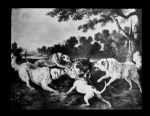
An ancient, rustic dog
tested by time.
|
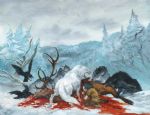
Bred to protect the lamb
from the wolf.
|

Our Breeding Pair 2007-2011
Ch. Allarme Arctic Gem
Ch. Schaferden Celtic Sun
|
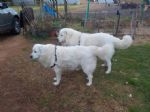
Our Breeding Pair 2018-Current
Sallson Sweetwispers
Izalab Fredrico
|
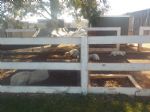
Our Breeding Pair
Ch Glasswater Airt Arturio
Ch Arawn Duwgenyn Gunainm
|
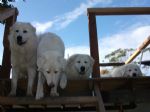
At home, at leisure.
Ch. Shaferden Celtic Sun
Arawn Bladewyn Chalice
Arawn Autumn Stone
Ch Allarme Arctic Gem
|
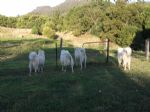
Working the fence
|
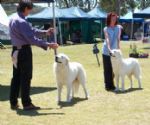
Ch. Schaferden Celtic Sun &
Arawn Autumn Stone
|
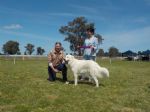
Glasswater Airt Arturio
Best Minor in Group
Lockhart Show Society 2022
|
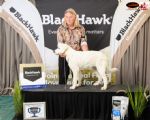
Arawn Gaelowsfyeld Albrigo.
Baby Puppy of Breed.
Canberra Royal 2023.
|
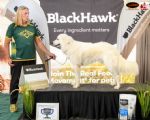
Aus Ch Glasswater Airt Arturio
Canberra Royal 2023
|
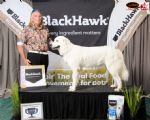
Aus Ch Arawn Duwgenyn Gunainm
Challenge Reserve
Canberra Royal 2023
|













